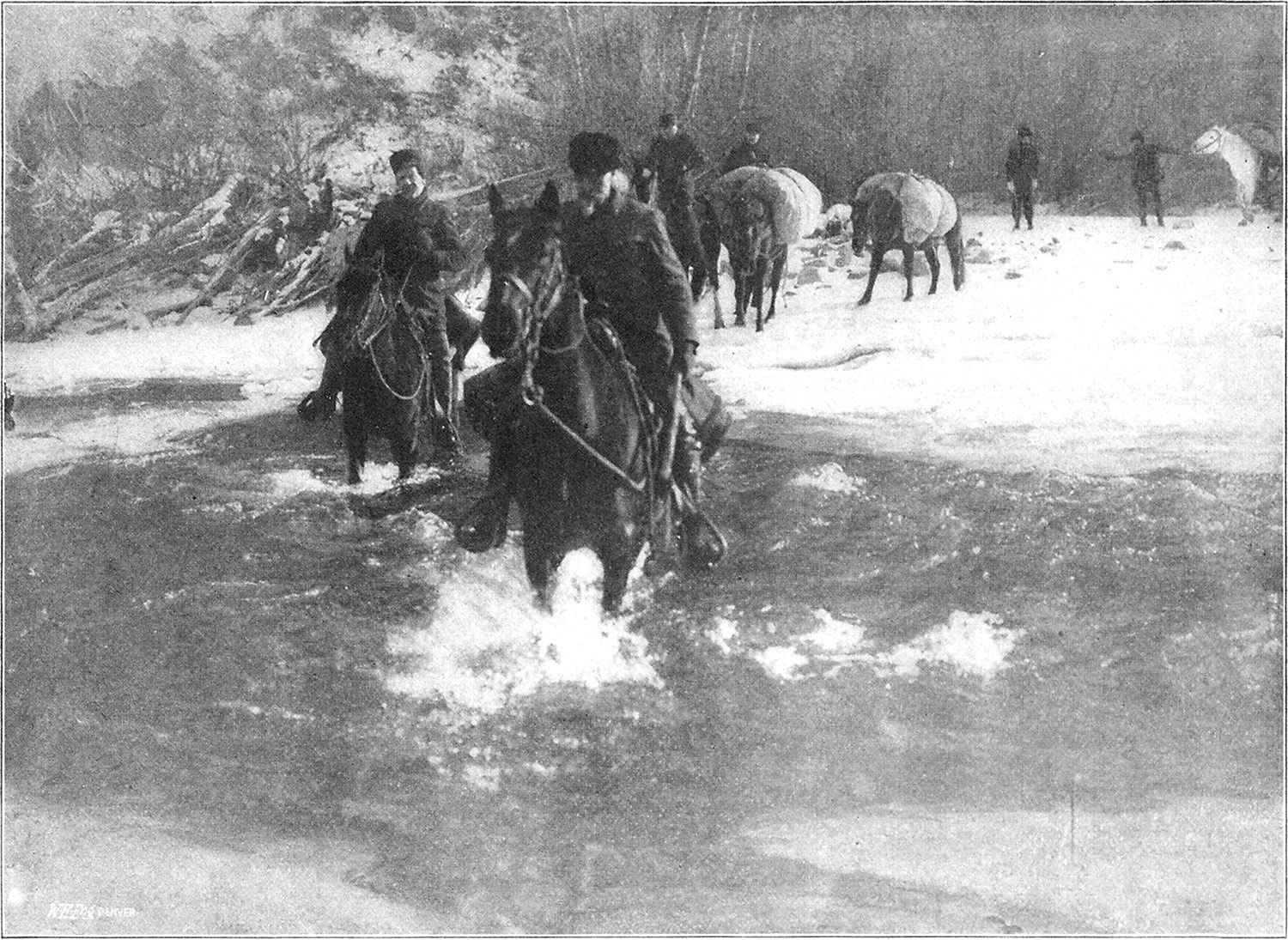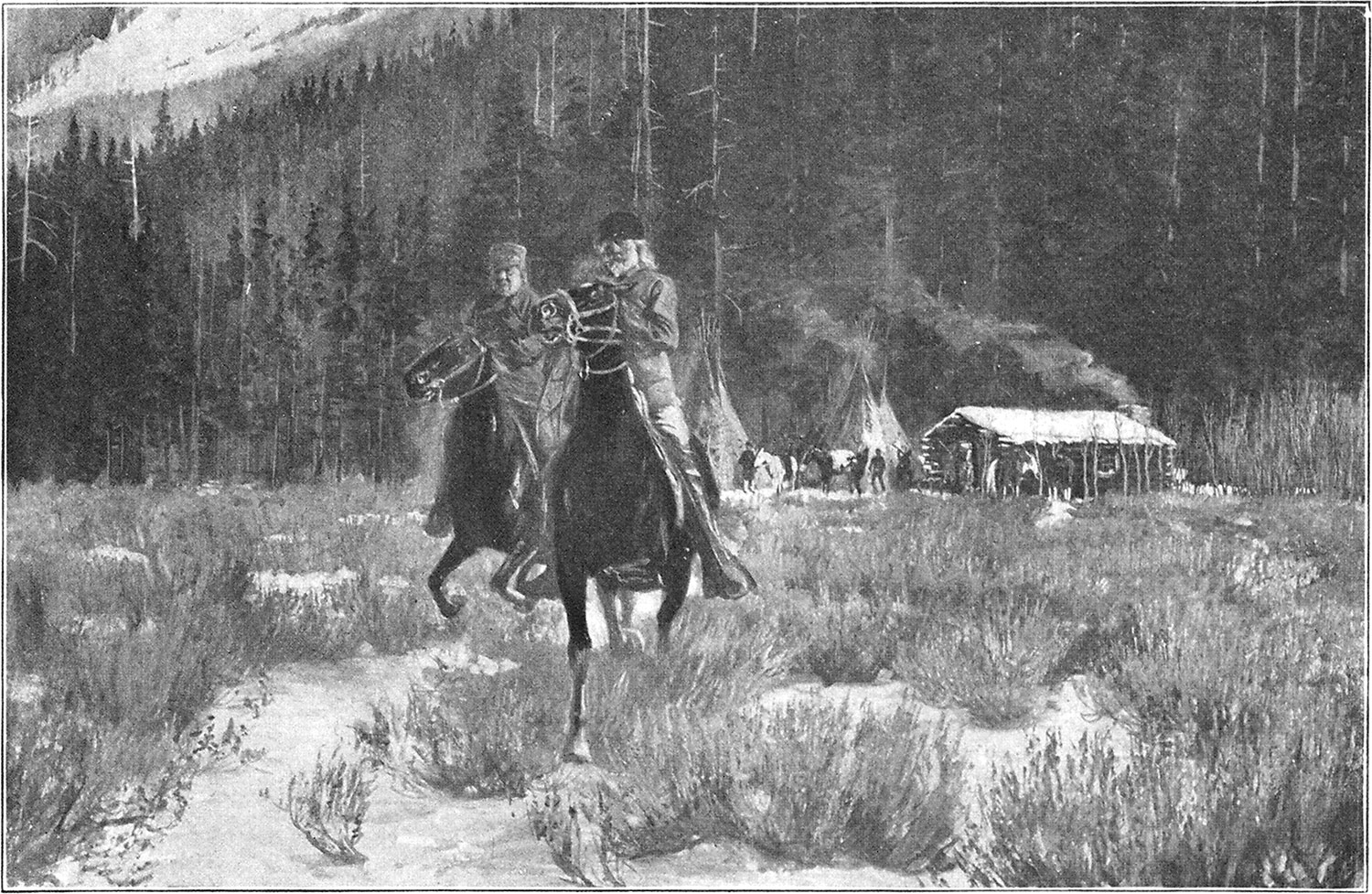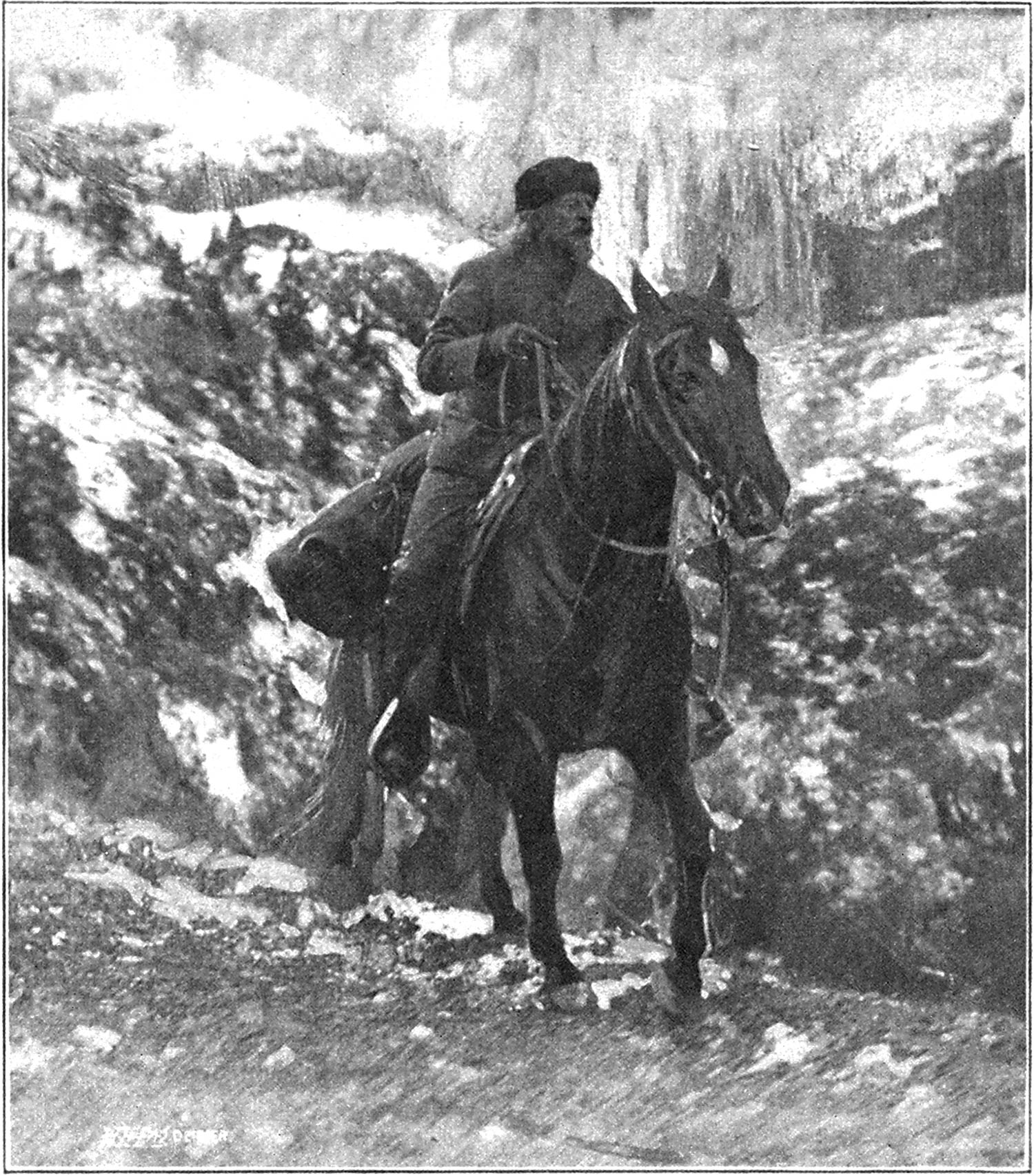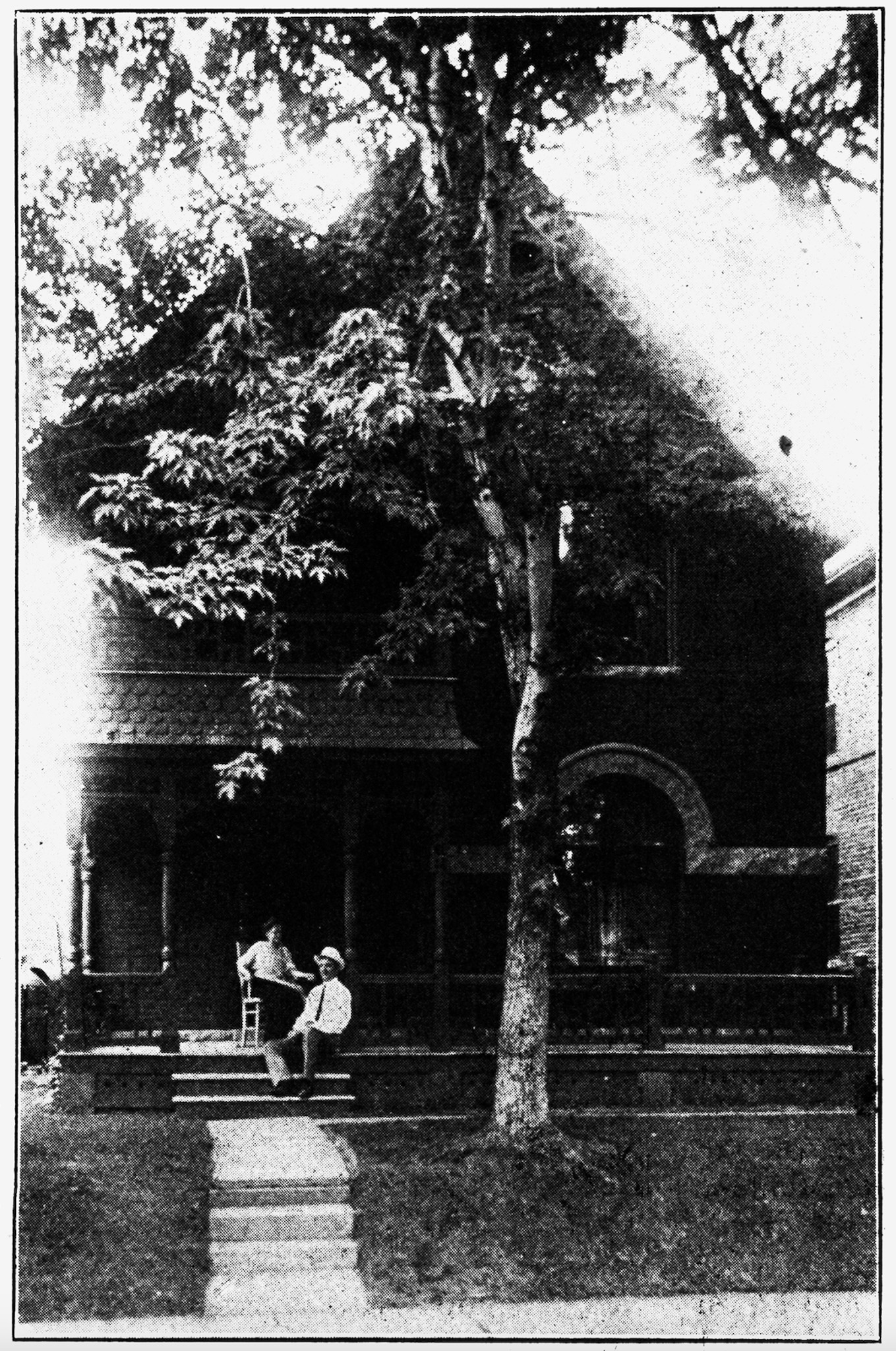This story, Buffalo Bill’s Last Interview, ran in the May 1917 issue of Outdoor Life. The author reportedly saw William Frederick Cody a few days after they spoke, by which time the 70-year-old had entered a coma. Buffalo Bill Cody died of kidney failure in Denver on January 10, 1917. He was regarded as a hero in his own time by many; a century later, his legacy is more complicated.
TO WRITE ANYTHING NEW of Buffalo Bill is almost impossible. The world has known him for sixty years, three generations have admired him, three-generations of children have loved and imitated him the world around, and there is probably not a civilized language in the world that does not contain his name. He was the most famous American. Not only the most famous American of our day, but the most famous American that has ever lived. Lincoln, Washington, Edison, Roosevelt, Rockefeller, Morgan—all these are known far and wide among those who read, but where is there another American known to the children of the earth? And Buffalo Bill is so known.
The greatest thing Buffalo Bill ever did, a thing that few men thruout the ages have ever equaled, was to give a new game to the children of the world. And in that his fame will probably outlive Caesar’s, for when Caesar and Napoleon have faded into oblivion, Buffalo Bill will have become a legendary hero, known in the literature and the legends and the children.
Buffalo Bill took the American frontier around the world. London, Paris, Berlin, people by the million the earth around, saw with their own eyes, not an imitation, not a mere. stage or theatrical effect, but the real thing. Here, before their own eyes, were the actual men, red and white, who rode the Western plains of America. No other man has ever done that, no other man now can do that. Buffalo Bill benefited, the West benefited, the whole world benefited by it, and no, one lost. That our outdoor West is known all over the earth as is no other country, we owe to Buffalo Bill, and to no one else.
And just as a curious coincidence, it falls to my lot to write not only the last picture of Buffalo Bill, but I also saw the last exhibition of his Wild West. But print not another word of him, leave his name out of every book and paper in the world for the years to come; yet, as I have said, his fame rests on something still more secure the name of Buffalo Bill is on the lips of the children of the world as they play-and that is fame few men can even hope to achieve. I thought of all these things as I sat silently in that little room and looked at that knightly figure, and listened to the last talk that Buffalo Bill was to give to the world. It was just a family group.
The great scout, the friend and intimate of kings and emperors, had laid all that quietly aside and calmly was waiting for the End. It was only a matter of days at the most, perhaps of hours.
But his last days were as quiet, calm and peaceful as his life had been active and brilliant. Mrs. May Cody Decker, in whose home he died, gave her brother every care and attention that love and admiration could bestow.
May Cody was his youngest sister and he often used to take her with him on the Plains in the early days. Between the two was a life-long bond that few sisters know, and when his death drew near Buffalo Bill went to her home. When the doctors told him that he would never see another sunset, Buffalo Bill dropped his head on his breast for a moment, a long, still moment, then raised it, fearless and serene. Those eagle eyes, keen and kindly as ever they were, looked long at the mountains, snowy in the distance, then he quietly gave a few directions about his funeral, and then again became the knightly, genial man he had always been.
The man was majestic. In the room were his two sisters, Mrs. May Cody Decker and Mrs. Julia Cody Goodman, and another relative, Miss Hazel Olive Bennet—who made this story possible and to whose kindly influence and intelligent co-operation the world is indebted for this last interview—myself, and that white, calm figure, William Frederick Cody. It was the End, and we all knew it.
We talked at random, as all do, perhaps, at such times. I can make no attempt to put down here what was said, as if this were a stenographic report. The Grand Old American talked of this and of that, now of the early days on the Great Plains, now of the boyhood of the present King of England—and in the room was a personal message from that King, and another from the President of the United States, and from others of equal rank thruout the world.
Buffalo Bill, Colonel Cody, Pahaska, they came and went, but the center of that last group was “Brother Will.” And much was said, there in that family group, that is not for the printed line, so I have sorted and arranged it all into what is written here. But such as it is, it is new, and little if any of it has ever been in print before. And I have selected the things I do speak of, just because they are new. Buffalo Bill was weary of the big things of the world, and was bored, and often irritated, when they were mentioned.
But his mind went eagerly back to the minor details of his earlier life and to the names of those he used to know, who long ago passed beyond the Great White Range. We talked of many of the old friends of my father’s, W. R. Thomas, like Reno, Custer, Benteen, Captain Mix, Grant, Sheridan, Carr, Crook, and Sherman, and the few I had known when a boy—the soldiers, stage drivers and scouts of the early days. Then I spoke of guns.

“Which gun was his favorite?”
“Lucretia Borgia,” he smiled. That was the name of his favorite buffalo gun.
“The old fifty caliber Springfield needle-gun?” I asked.
“No, forty-eight caliber. The muzzle loaders of the Civil War were fifty-two caliber, you remember!”—I didn’t, because I was not born till after the war and he laughed—”but they made the breech-loading Springfield forty-eight caliber. I liked it better than the Sharps, and with it I killed 4,250 buffalo one year-or 4,862 in eighteen months, besides deer and antelope-for the Union Pacific builders.”
“Did you always use the same gun?”
“Practically so. The barrel of Lucretia Borgia is now on the elk horns at the ranch, with the knife with which I killed Yellow Hand. I don’t know where the stock is”—and here the white head drooped wearily, and some one took up the talk for a while.
“Yes,” he began again, “I have killed over 40,000 buffalo, and most of them with that old gun. But not all of them, of course.”
“That was your favorite gun, then?”
“It is now, but our term of service on the Plains covered so many years, and so many different kinds of guns came into use that we tried out this offer, then that one. The ’73 Winchester was well liked, as was the Spencer carbine, especially on horseback, but they could not shoot alongside of the .48-caliber needlegun. That carried 70 grains of powder and 4 70 grains of lead. ‘Shoot today- kill tomorrow!’ was what the Native Americans called it.”
That was my father’s rifle, and I love that gun. I asked him about the old buffalo Sharps rifle, the .45-120-550 gun that weighed from sixteen to eighteen pounds, or the .44-caliber, bottle-neck, eleven-pound Sharps, like the one I own, my first rifle, and that were the usual favorites with the buffalo-killers, but he did not say much about them.

To my surprise he did not seem interested in them at all. I presume the reason was that he usually hunted buffalo from horseback, and so did not use these heavy rifles, as did the men who killed from the ground. Then I learned how he killed his buffalo and how he got his name. He used to ride on the right-hand side of a herd as near to the front as he could get, and always shot to the left hand, as a rifleman on horseback naturally would do. This method usually caused the herd soon to run in a solid circle, or to “mill,” as the cattlemen call it, and this kept the herd in one place, running round and round and round like a wheel. Thus one could kill as many as were needed for that day, and have them all in the same spot, convenient for the skinners and the meat wagons.
The other method—one he did not use so much as did others—was to “get a stand” on a small herd and shoot down the animals that were inclined to break away and lead the herd out of range. From this method comes, I have no doubt, our present purely American word, “to buffalo,” meaning to have someone confused, intimidated, bluffed and outgeneraled.
But he did not consider this so much hunting as it was railroad building, opening the wilderness to civilization, and the first step in subjugating Native Americans. Also because cattle raising and farming, as every old-timer knows, was impossible where the buffalo were. The wild cattle (the buffalo), savage and untamable as the wolves that followed them, ruined fences and crops and killed all domestic cattle, for it is death for the domestic cow—due to the hump on the calf-to breed with the buffalo bull, and the buffalo bulls could easily run down and kill any domestic bull. The elimination of the buffalo was not wanton; it was necessary. In their place today are domestic cattle, less picturesque but far more valuable to mankind. I speak of this somewhat at length out of justice to Buffalo Bill. He never killed for slaughter’s own sake. The more than 40,000 that fell to his rifle were killed for food, just as we kill today. He fed with wild meat the men who laid the first iron trail across the plains, who first linked the two oceans with a path of steel.
“Who was the best revolver shot you ever knew?” I asked.

“Frank North, chief of the Pawnees. He was the best revolver shot, standing still, in the air, from horseback, or at running animals or men, that I have ever seen,” and again those dark eagle eyes of the Old Scout lit up like an excited boy’s. Then came his sister’s lifted hand of caution behind his shoulder, and I changed the subject, for that great heart was liable to stop at any instant, and we had to avoid anything tending to excite him. But after a time I came back to the same subject.
“Was Wild Bill one of the quickest shots?” I ventured.
“Fair,” smiled Cody, and I too smiled to hear a man say that Wild Bill was a “fair” shot. But this was Buffalo Bill speaking, and he spoke as one with authority.
“‘Bill’ was only a nickname we gave him, you know?” I didn’t know, but nodded. “His real name was James B. Hichox [sic] and we got to calling him ‘Wild Bill’ because when we were all boys together there were four ‘Bills’ in the wagon train, and we had to sort them out somehow. Jim Hichox was always popping away at everything he saw move when on guard at night over the stock, so we sort of got to calling him ‘Wild’ Bill, and that is how the name came to him. They called me ‘Buffalo’ Bill because I had that buffalo contract with the U. P. and got down over 4,250 for meat. I have forgotten what became of the other two ‘Bills.’”
“How did Hichox get so many men?” I asked.
“Well, Bill was a pretty good shot, but he could not shoot as quick as half a dozen men we all knew in those days. Nor as straight, either. But Bill was cool, and the men he went up against were rattled, I guess. Bill beat them to it. He made up his mind to kill the other man before the other man had finished thinking, and so Bill would just quietly pull his gun and give it to him. That was all there was to it. It is easy enough to beat the other man if you start first. Bill always shot as he raised his gun. That is, he was never in a hurry about it; he just pulled the gun from his hip and let it go as he was raising it; shoot on the upraise, you might call it. Most men lifted the gun higher, then threw it down to cock it before firing. Bill cocked it with his thumb, I guess, as it was coming up into line with his man. That’s how he did it. But he was not the quickest man by any means. He was just cool and quiet, and started first. Bill Hichox was not a bad man, as is so often pictured. But he was a bad man to tackle. Always cool, kinda cheerful, almost, about it. And he never killed a man unless that man was trying to kill him. That’s fair.”
It was, and I so agreed.

“Was any particular revolver, size, or caliber the favorite in the early days?”
“No, not particularly. Like the rifles, new kinds and sizes came in and put other kinds out. So we used all kinds, and sometimes any kind we could get. It was the cap-and-ball Colt, then the metallic cartridge six-guns came on the plains, and they saved us a lot of trouble, especially in wet weather, or on horseback. The only way we could load a cap-and-ball on horseback was to have extra cylinders, and change from an empty to a loaded one, and then reload all the empty cylinders when we had a chance. But with wet clothes, wet hands, and everything wet, that was often hard to do, and sometimes we could not reload at all. A muzzle-loading rifle or shotgun was different, because we could keep the muzzle and the loading things covered better. So the metal cartridges were a great thing.”
“Was the .45 Colt or the .44-caliber preferred by most men?”
“It didn’t make any difference. Just what we happened to have.”
“Was any kind of knife a special favorite on the plains?”
“No. Any kind that the owner liked, or could get. Such things as guns, revolvers and knives were just like any other kind of fashion, or tools. Some kinds were favorites, maybe, in one place or at one time here and there, then other kinds. I used all of them, I guess. But for buffalo I liked best the .48-caliber Springfield. ‘Shoot today; kill tomorrow.’”
“We could not shoot as good as you today. We did not have as accurate guns, either in rifles or revolvers, or loads. And we could not afford the ammunition with which to practice.”
“Could the old-timers shoot better than the men of today?”
“No,” and a shadow of injured pride or regret, it seemed like, crossed the Old Scout’s face. “No, we could not shoot as good as you today. We did not have as accurate guns, either in rifles or revolvers, or loads. And we could not afford the ammunition with which to practice. I never saw such revolver shooting as Captain Hardy did one night over at his house, in that private shooting place he has down cellar.”
But Hardy, one of the world’s best shots, says that Buffalo Bill was the best shot from horseback that the world has ever seen.
“No. None of us, not even Frank North, could do such things. C. M. McCutchen can shoot a revolver far faster than any man I ever knew on the frontier, five hits on a man at ten yards in three-fifths of one second is more than twice as fast as we could do. He is probably the fastest man with a revolver who ever lived. All of them today—the best shots, I mean—can beat us old-timers every time. But we did the work, all the same. We had to.”
The voice was tired now, and the doctor came.

“Brother Will, it is time for him to go,” said Mrs. Goodman gently, and I arose. The Old Scout was in pajamas and slippers, and over them had been drawn a house coat. Instantly Buffalo Bill was on his feet, straight backed, head up, as in days of old. The man recalled the Spanish cavalier, courtly as the prince he was in his kindly grace, all unaided by gorgeous trappings or picturesque surroundings, just the Man Himself standing there, waxen pale, his silver hair flowing down over his straight, square shoulders, his hand out in the last farewell. He asked for me afterwards, but the doctors said “No.” But as we all stood up in that little home room a silence fell. It was the last time. I knew it, he knew it, we all knew it. But on the surface not a sign.
“Goodbye.”
I took his hand, looked into those clear, calm eyes for a moment—I must not keep him standing—said “Goodbye,” and turned from one of the finest, truest, grandest men on this earth.
This text has been abridged for clarity and minimally edited to meet contemporary standards. Read more OL+ stories.
